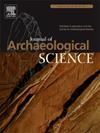How can we improve statistical training in archaeological science?
IF 2.6
1区 地球科学
Q1 ANTHROPOLOGY
引用次数: 0
Abstract
The aim of this paper is to shine light on fundamental statistical concepts that archaeologists do not talk about enough. I argue that more deliberate discussion of these statistical ‘elephants in the room’ can have a positive impact on improving statistical training and on steering us away from perpetuation of poor research practices.
1) Statistical thinking should come first. This will help us break down some of the stigma around numbers and statistics, and set us up for building analytical frameworks that will provide the most informative answers to our research questions.
2) Descriptive and inferential statistics have different interpretative potential. This will clarify how we can move from using tools that only allow us to talk about our studied samples to using tools that enable us to draw inferences about the underlying populations from which the samples derived.
3) p values can be extremely variable. This will help spread awareness about the misuses and misconceptions of Null Hypothesis Significance Testing (NHST) and demonstrate the dangers of using significance thresholds to interpret data.
4) Statistical precision is not the same as measurement precision. This will bring attention to the many different types of uncertainties that are built into archaeological datasets (e.g., statistical precision, instrument measurement error, natural variation),.Recognising this is key for drawing reliable inferences from our data.
5) Meta-analyses and forest plots can be useful for synthesising previous research. This will help spread awareness about the benefit of meta-analyses for creating evidence-driven summaries of previous findings.
The discussion draws on examples from isotope archaeology, bioarchaeology, and organic residue analysis to illustrate how switching from a reliance on significance testing to a reliance on effect sizes can improve methodological rigour and the representativeness of our findings. The paper ends with a discussion of the roles and responsibilities of supervisors for creating an effective learning environment for statistical training. This includes, but is not limited to, acknowledging the problems of NHST and advocating for adherence to Open Science principles. Ultimately, the changes suggested in this paper will help us raise discipline-wide standards for quantitative training and improve both the breadth and the depth of archaeological research.

我们如何改进考古科学的统计训练?
这篇论文的目的是阐明考古学家谈论得不够多的基本统计概念。我认为,对这些统计“房间里的大象”进行更深思熟虑的讨论,可以对改进统计训练产生积极影响,并引导我们远离长期存在的不良研究实践。这将帮助我们打破围绕数字和统计的一些耻辱,并使我们建立分析框架,为我们的研究问题提供最翔实的答案。2)描述性和推断性统计具有不同的解释潜力。这将阐明我们如何从使用仅允许我们谈论研究样本的工具转向使用使我们能够对样本派生的潜在群体进行推断的工具。3)p值可能是非常可变的。这将有助于传播对零假设显著性检验(NHST)的误用和误解的认识,并证明使用显著性阈值解释数据的危险。4)统计精度与测量精度不同。这将使人们注意到考古数据集中存在的许多不同类型的不确定性(例如,统计精度、仪器测量误差、自然变化)。认识到这一点是从我们的数据中得出可靠推论的关键。5)元分析和森林图可以用于综合以前的研究。这将有助于传播人们对荟萃分析的好处的认识,荟萃分析可以为以前的发现创建证据驱动的摘要。讨论借鉴了同位素考古学、生物考古学和有机残留物分析的例子,以说明如何从依赖显著性检验转向依赖效应量可以提高方法的严谨性和我们发现的代表性。本文最后讨论了主管为统计培训创造有效学习环境的角色和责任。这包括,但不限于,承认NHST的问题和倡导遵守开放科学原则。最终,本文提出的改变将有助于我们提高学科范围内的定量训练标准,提高考古研究的广度和深度。
本文章由计算机程序翻译,如有差异,请以英文原文为准。
求助全文
约1分钟内获得全文
求助全文
来源期刊

Journal of Archaeological Science
地学-地球科学综合
CiteScore
6.10
自引率
7.10%
发文量
112
审稿时长
49 days
期刊介绍:
The Journal of Archaeological Science is aimed at archaeologists and scientists with particular interests in advancing the development and application of scientific techniques and methodologies to all areas of archaeology. This established monthly journal publishes focus articles, original research papers and major review articles, of wide archaeological significance. The journal provides an international forum for archaeologists and scientists from widely different scientific backgrounds who share a common interest in developing and applying scientific methods to inform major debates through improving the quality and reliability of scientific information derived from archaeological research.
 求助内容:
求助内容: 应助结果提醒方式:
应助结果提醒方式:


